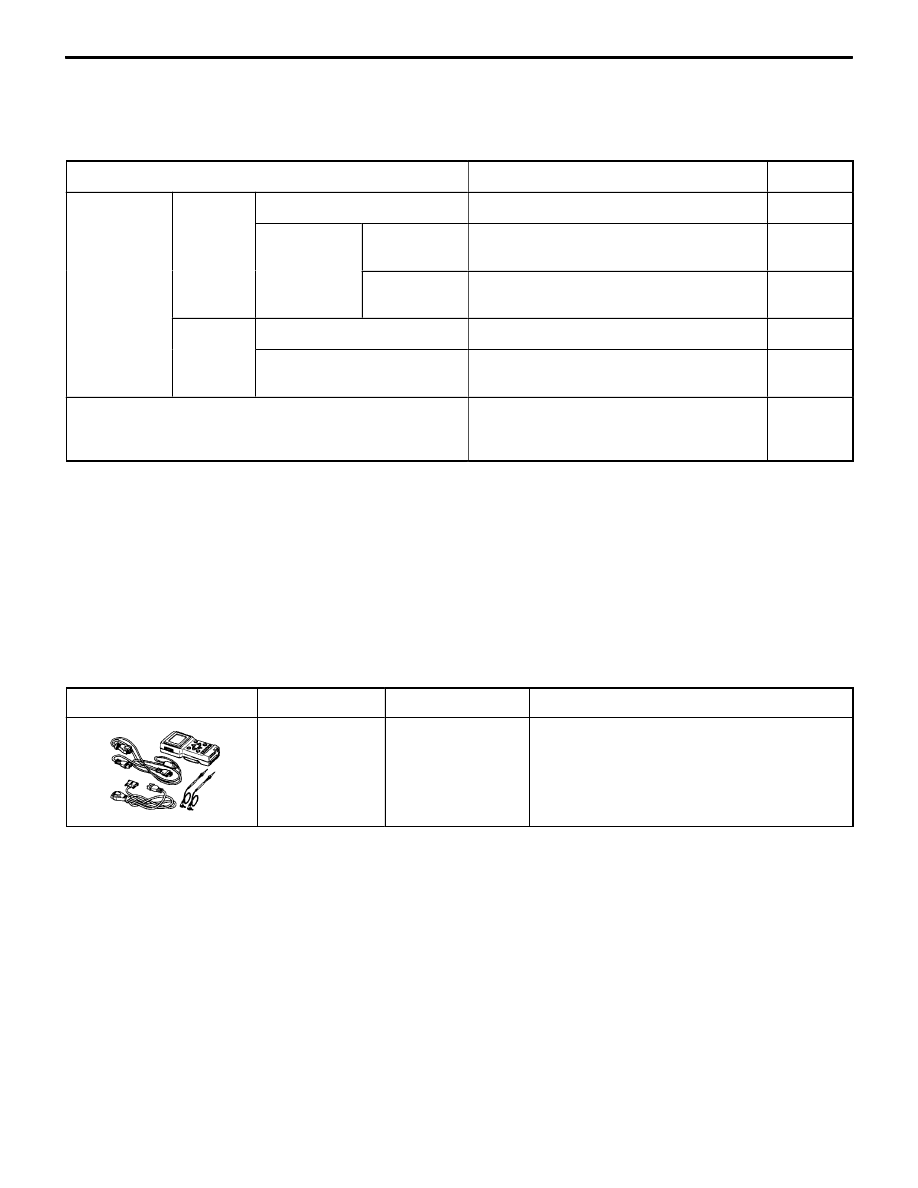Mitsubishi Lancer Evolution VI. Manual - part 107

CHASSIS ELECTRICAL –
Headlamp
54-32
HEADLAMP
SERVICE SPECIFICATIONS
Items
Standard value
Limit
Headlamp
aiming
High
beam
Vertical direction
25’ (22 mm) below horizontal line
–
aiming
[Parenthe-
sized are
allowable
beam
Horizontal
direction
Left head-
lamp
Parallel to direction of vehicle travel
–
allowable
beam axis
deviations 3
m ahead of
Right head-
lamp
15’ (13 mm) leftward from vertical line (V)
–
m ahead of
headlamp.]
Low
beam
Vertical direction
25’ (22 mm) below horizontal line
–
p ]
beam
Horizontal direction
Position where 15* rising section intersects
vertical line (V)
–
Headlamp intensity cd (Center of high-beam high intensity
zone)
–
15,000 or
more per
light
Cautions in Handling Headlamp Assembly
Each headlamp assembly has a plastic outer lens on. Observe the do’s and don’ts below when
handling the headlamps.
D
Do not leave the headlamps lit for longer than 3 minutes with a protective cover on.
D
Do not mask the outer lens surface by taping or in any other way.
D
Do not scrub the outer lens surface with a pointed tool.
D
Use the designated wax remover for cleaning the outer lens surface. Rinse it thoroughly.
D
Use the designated genuine bulbs.
SPECIAL TOOLS
Tool
Number
Name
Use
MB991502
MUT-
II
sub as-
sembly
ETACS-ECU input signal checking